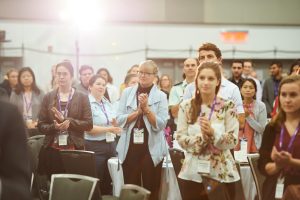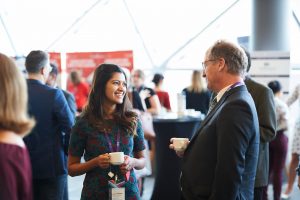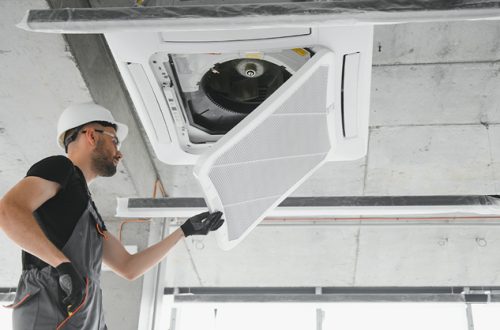A growing, vibrant economy requires contributions from workers of all backgrounds, regions, and sectors. Lucky for Ontario industry, shifting demographics in the province have led to an influx of employees from different backgrounds who can provide a variety of experiences that lead to innovative solutions.
 We know that just tolerating differences is no longer enough. Celebrating, enhancing, and finding ways to utilize unique profiles in the workplace leads to rejuvenated thinking, creative practices, and innovation. Meaningful engagement that fully utilizes diversity is more than just reading handbooks or consulting websites: what are some of the best practices that companies can use to enhance their diversity dimensions?
We know that just tolerating differences is no longer enough. Celebrating, enhancing, and finding ways to utilize unique profiles in the workplace leads to rejuvenated thinking, creative practices, and innovation. Meaningful engagement that fully utilizes diversity is more than just reading handbooks or consulting websites: what are some of the best practices that companies can use to enhance their diversity dimensions?
OSPE’s Exchange Hub at the University of Guelph asked its network of engineers to relay some of their stories from the field so that we may better understand how these lived experiences can foster diverse and inclusive workplaces that support staff and lead to long term development. Canvassing a wide sector of members, OSPE heard from an array of sources that reflected recent and longstanding developments in the field of engineering.
Ian Collins, P.Eng., and Senior Environmental Risk Assessor at GHD Group and Chair of Rainbow Alliance of Diverse Identities for Inclusion (RADII), has worked in the industry for decades and has been witness — and pioneer — to many of its changes. “My personal experience with D&I (diversity and inclusion) is that, as a gay man, I have been the introduction to D&I for people just by having been myself. When I first started working in this industry I was really afraid to say anything. The first few months in particular, I didn’t come out because I didn’t know if it was something that is done in this industry. I would think to myself, ‘have I sentenced myself to a career of not being able to be out of the closet?’” While he reflects that he is now more confident in embracing his identity in the workplace, he views that as a personal development, and not one widely reflected in the industry. “Every new job that I have started, it feels like going back to square one.”

As Jon Hendy, Talent Management and North American Inclusion & Diversity Council Chair at GHD notes, there needs to be more emphasis placed on high-level thinking, rather than just at the individual level. “The shift moved away from the idea of meritocracy, which is kind of a fallacy, that you just have to perform well and you will be rewarded, without taking into consideration that some of the lenses that we look at performance through were biased in some way. Some things like utilization, that being a high indicator of performance previously. That is going to definitely exclude certain groups of people; if you think about parents, mothers, and people who are caring for older family members in their homes, is something that occurs in a lot of non-white homes. That is going to be a barrier if we are just looking at utilization as performance indicators.” By stressing the need for thinking on the larger scale, rather than individual metrics, Hendy suggests the burden of diversity not just be placed on an individual like Ian Collins, but adapted as a broader company policy that values diversity as a plus.
Supervising Engineer, Adnan Akhtar echoes this by suggesting leadership take charge. “Supervisors need to work hard to establish these ground rules in their team and make sure each of their team members is comfortable expressing themselves both when communicating with their team members as well as their supervisor and other stakeholders.” Important is the creation of an environment, led by leaders, where uncomfortable thoughts can be expressed by members of diversity groups who feel like they are at a disadvantage. Leaders must clear the space for honest, transparent conversation, that allows employees to feel heard and valued.
As Collins notes, in his career, he has noticed that the behaviour of leadership is vital. “Model the behaviour. If you see your manager modelling the behaviour that they talk about, I think you are more likely to take that seriously.” And Hendy agrees: “It’s the same with leadership, the things that we need to do well in order to retain diverse talent are the things we need to do well, period.”
 This top down approach is vital to ensuring that equity, diversity, and inclusion (EDI) are valued in the workplace and utilized to the fullest extent. It is common sense: leaders must lead. But how can leaders prepare themselves for these demographic shifts, and ensure that such changes are not just taking place at a surface level? Oliver Markovski at Royal Canin Canada suggests that a simple combination is helpful: “Diversity and bias training is helpful and is becoming more common in many organizations. Having a local policy related to workplace inclusion that is reviewed and promoted by higher management is important.” This approach asks for leaders to participate in training alongside employees, and asks for a mechanism that holds individuals accountable to their behaviours. In order to model behaviour, employees must see that they are held accountable.
This top down approach is vital to ensuring that equity, diversity, and inclusion (EDI) are valued in the workplace and utilized to the fullest extent. It is common sense: leaders must lead. But how can leaders prepare themselves for these demographic shifts, and ensure that such changes are not just taking place at a surface level? Oliver Markovski at Royal Canin Canada suggests that a simple combination is helpful: “Diversity and bias training is helpful and is becoming more common in many organizations. Having a local policy related to workplace inclusion that is reviewed and promoted by higher management is important.” This approach asks for leaders to participate in training alongside employees, and asks for a mechanism that holds individuals accountable to their behaviours. In order to model behaviour, employees must see that they are held accountable.
OSPE’s Exchange Hubs questioning of members resulted in a few stark similarities. One, as noted by Collins, is that change is not as deep-seeded as publicity campaigns have led us to believe. “When I started my career my women colleagues were very concerned about pay equity, and now my women colleagues are still very concerned about pay equity, 16 years later.” And this comment is repeated by many we spoke to. It is a concerning fact when demographics have changed so much in the last few decades, and it suggests that the industry is still not tapping in nearly enough to the full potential of its diverse base.
There are many in-roads to be made before diversity initiatives take root and result in changes that are not surface level. The lived experience of many members provides guidance, insight, and direction: their stories must be heard. OSPE values the contribution of its members and is proud of those who chose to speak up in the name of change.
To show your support for diversity and inclusion in engineering, visit EngineeringForChange.ca
This blog was contributed by OSPE Guelph Exchange Hub Members: Albert Jiang, MASc, EIT, Umna Arshad, EIT and Kate Gaffney, EIT





Leave a Comment